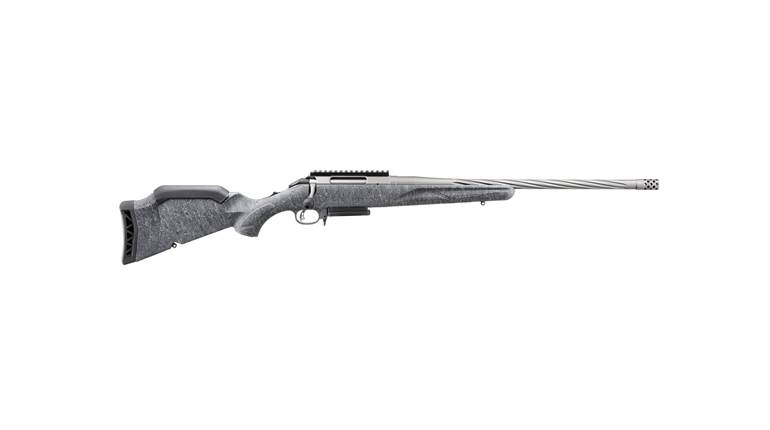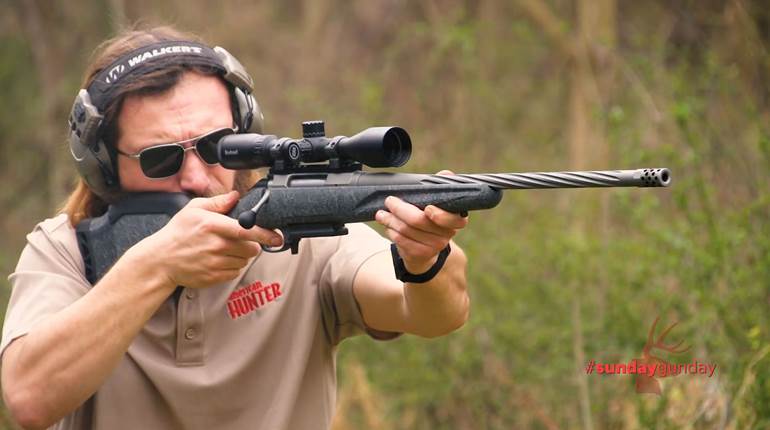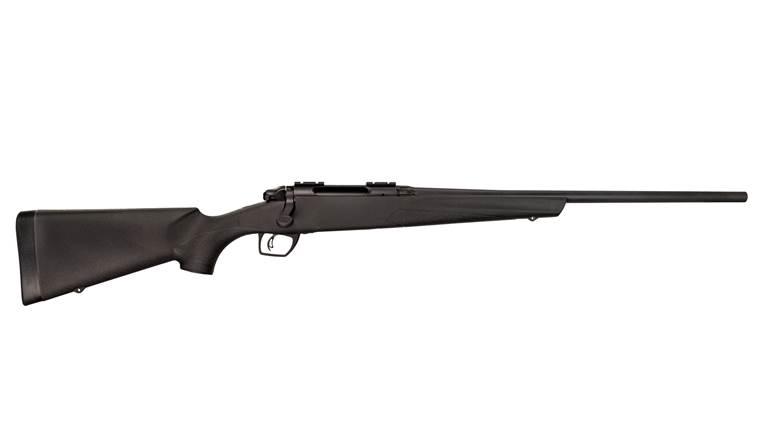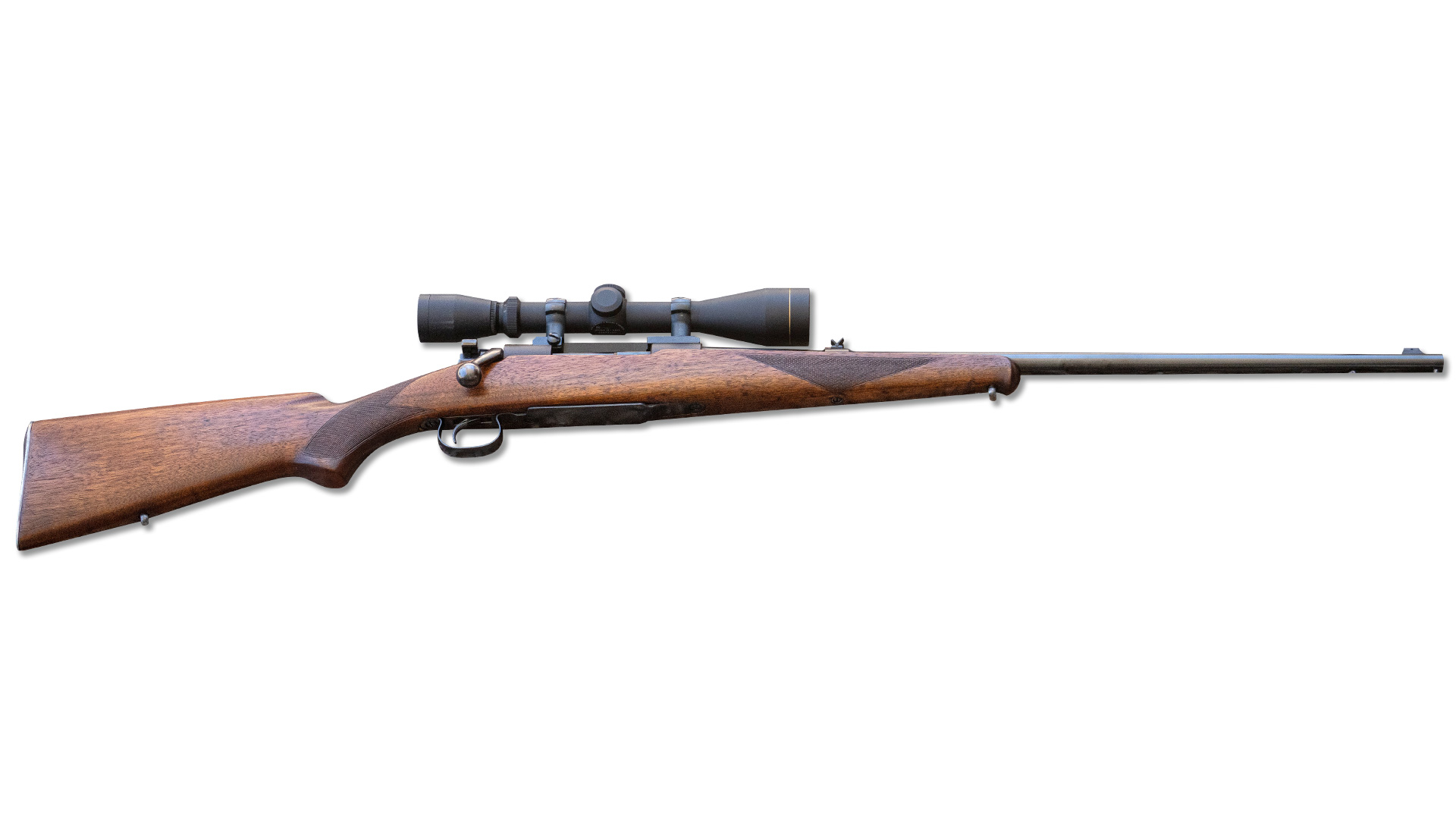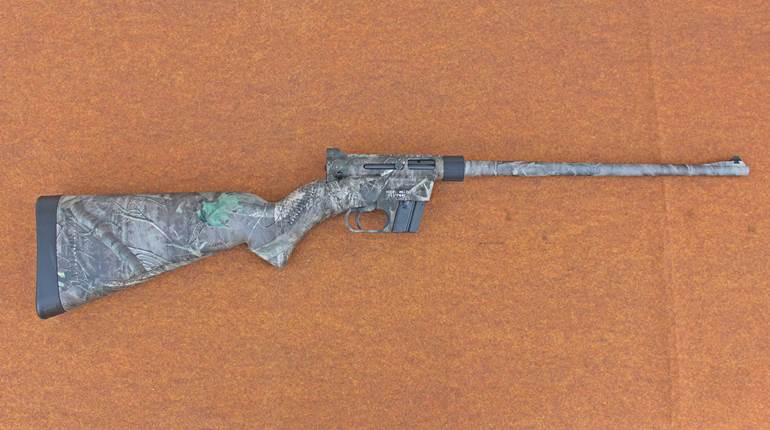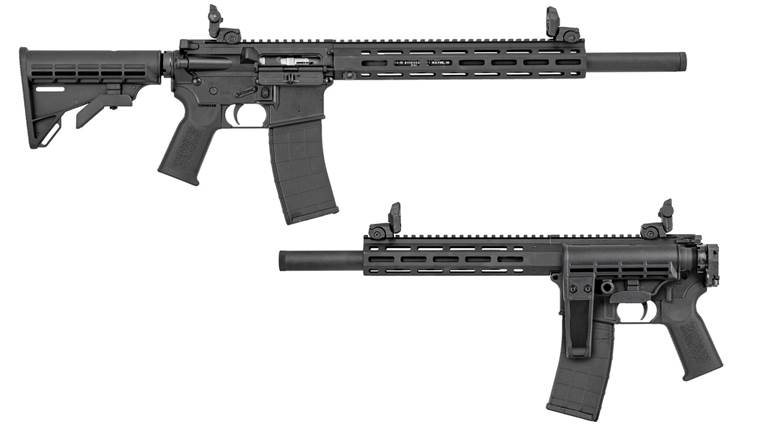
Saying American riflemen tend to be conservative is like saying trees tend to grow wood. That’s why new trends in hunting rifles often encounter resistance. One supposedly new way of marketing such guns is by referring to them as “affordable” or “value-priced,” but most Americans simply think of them as “cheap.” That has caused a good deal of grumbling, especially on the Internet, yet another new trend. Since few gun stores feature wood stoves these days, the formerly traditional venue for rifle discussions, shooters whine where we can. Some things never change.
In autumn, Americans still follow the old traditions, including hunting, eating turkey, and throwing sales across the country. During the fall of 2013 the following prices appeared before, during and after big-game season in my part of Montana:
While these rifles don’t look like the ones many hunters grew up shooting, they do not mean the end of civilization as we know it. To prove that point, some historical perspective might be useful. In the 1958 issue of Gun Digest well-known writer Bob Wallack reviewed recent American factory rifles, and had this to say about the Remington 721 and 722, the long and short-action versions of the company’s post-war bolt-action rifle: “The motto at Remington these days … is ‘all for production,’ so their rifles are designed for ease of manufacture and to sell at a certain price. Every part that can possibly be banged out on a punch press is banged out on a punch press, much to the sorrow of any real gun bug. Such methods do not affect the handling qualities or functioning of a rifle, certainly, but neither do they add up to a gun that a guy’d want to own with pride.” Though written over half a century ago, the spirit of Wallack’s comments would fit right in among many Internet posts.
Mass manufacturing really began when practical steam engines were developed in the late 1700s, about the time the United States was founded. In the 20th century, electricity sped up assembly lines considerably by giving machine tools individual motors, rather than keeping them dependent on belts off an overhead, steam-driven shaft. As a result, average Americans could afford not only functional firearms and sewing machines, but Model T Fords and Frigidaire refrigerators. Yet many of us still somehow believe that any factory-made products from before right now were of much finer quality, the reason many shooters now call the 721 and 722 Remington's “classics.”
The Remington 721/722 appeared in 1948, but before World War II Savage made an even less costly and simpler rifle called the Model 23. The “action” was actually the rear end of the barrel, machined to take a bolt, trigger and detachable-box magazine. Designed for lower pressure cartridges, the Model 23 was chambered for the .22 Long Rifle, .22 Hornet, .25-20 Win. and .32-20 Win. Both the Remington and Savage rifles are just a small part of the long American of history of affordable, mass-produced firearms.
Like the Remington rifles, the Savages also shot accurately, and are now sometimes called classics. However, I own a Remington 722 and a pair of Savage 23s, and only their ages and walnut stocks might qualify as “classic.” Otherwise they were indeed designed to be made less expensively and hence sell for less than competing rifles. In fact, that is most of the reason for my Savage 23s in .25-20 Win. and .32-20 Win.: They’re still the least expensive rifles available in those “classic” chamberings.
I also own a Ruger American Rifle in .308 Win., and my wife, Eileen, owns a Savage Axis in .22-250 Rem. The most obvious difference between those 21st-century rifles and the Remington 721/722 and Savage 23 is their synthetic stocks, often called “Tupperware” by Wallack-world critics, because they’re made by injection-molding. (In reality this isn’t an entirely inexpensive method, since the machinery for making synthetic stocks costs several hundred thousand dollars. But after the initial investment, stocks can be cranked out for a few bucks apiece, and even faster than plain-grained walnut stocks could be machine-turned for the Remington 721/722 and Savage 23.)
Will shooters be calling the Ruger American and Savage Axis “classics” half a century from now? Perhaps, especially if somebody comes up with a process to mass-manufacture inexpensive synthetic stocks less prone to warping. No, injection-molded stocks don’t warp like wood does, because they do not absorb atmospheric moisture. But they don’t always come out of the mold absolutely straight, either. That can cause minor accuracy problems, since the four “fall-sale” rifles all supposedly have free-floated barrels.
Contrary to what many shooters believe, proper free-floating does not mean a folded dollar bill can be passed between barrel and fore-end. Instead the fore-end shouldn’t touch the barrel when the rifle is fired; contact can affect barrel harmonics, resulting in off-the-mark shots, often called “fliers.” Many early injection-molded stocks were nearly as floppy as foot-long hot dogs, but even today’s stiffer stocks require more than dollar-bill fore-end clearance.
I first fired an evaluation sample Ruger American on a combined long-range shooting school and hunt on the FTW Ranch in the Hill Country of Texas in September 2012. The rifle shot pretty well with the Hornady factory ammunition provided, taking an axis deer and clanging steel gongs out to 1,000 yards. Even so, a few unexpected fliers occurred, not all my fault, but I was intrigued enough to take the rifle home for more shooting.
My usual test for free-floating is to grasp the tip of the fore-end and the barrel in my right hand, and squeeze. If the barrel touches the fore-end, the stock’s not really free-floated, and the Ruger’s wasn’t floated quite enough. A couple of minutes with a round rasp solved the problem, and while the barreled action was out of the stock I adjusted the trigger to the minimum pull possible.
In Texas the scope was a 4-16X Burris Eliminator III (which worked great), but for this test I mounted another Burris, a 3-9X 40 mm Tactical Fullfield II with a 30 mm tube. Apparently that model isn’t offered anymore, but mine has proven reliable on several rifles, with very repeatable adjustments. I sighted in with Black Hills 175-grain match loads left from another project, and the first three-shot group at 100 yards measured 0.34 inches center-to-center. Not bad for a “cheap” rifle!
After adjusting the scope a little more, eight handloads were tested, using various propellants chosen from recent data showing high velocities, with bullet weights ranging from 110 to 200 grains. Three-shot groups ranged from 0.53 inches to 1.31 inches, and all the groups (including the Black Hills cloverleaf) averaged 0.92 inches. None of the handloads was worked-up specifically for the rifle; instead, the bullets were seated slightly shy of the lands over a mid-level propellant charge. Apparently sub-inch accuracy is “normal” for this .308 Win. American.
In Texas the rifle had been fired about 130 times without cleaning, and I still hit distant gongs. Back in Montana I cleaned the bore to bare steel (an easy job), and looked at it through a Hawkeye bore-scope. While not as smooth as a Krieger or Lilja, it wasn’t much different, which is typical of hammer-forged Ruger barrels produced during the past 20 years.
While in Texas I got to talk quite a bit with engineer Mark Gurney, who is Sturm, Ruger & Co.’s product manager and the head of the American project. Gurney said the rifle was designed by a committee-though fortunately not a government committee. None of the American’s features are new, but together they make the rifle not only functional but accurate. They include three locking lugs on the bolt, which allows for a lower bolt-throw and even distribution of the stresses imparted on the front of the action during firing. There are also stainless-steel bedding blocks molded into the stock, and the adjustable trigger has a tab in the main blade, preventing firing before the tab is depressed, allowing a clean pull of reasonable weight.
Eileen purchased the Savage Axis .22-250 Rem. slightly used, including the factory mounted 3-9X scope, and a used Axis is really affordable. During the past few years she’s started getting recoil headaches, so has switched to lighter-recoiling rifles and shotguns, and heard the .22-250 Rem. was not only effective on coyotes but pronghorns and deer. (Before anybody gets upset about the idea of using a “twenty-two” on big game, be aware that Montana allows their use and that the .22-250 Rem. is among the more popular deer/antelope rounds on the eastern plains.)
Eileen owns some pretty nice hunting rifles, including a pre-World War II German combination gun, a New Ultra Lights Arms .257 Roberts and a Kilimanjaro .308 Win. with a very fancy walnut stock. But when trying a new cartridge she often buys an economical rifle in case she doesn’t care for the new round.
She was initially pleased with the Axis, since it was fairly light and the stock fit her fairly well, which is not always the case with factory rifles. But she said the trigger was awfully heavy, and it was. Savage doesn’t use its Accu-Trigger on the Axis, and the pull on this one averaged around 5 pounds, 8 ounces.
I hand tuned it to a crisp 4-pound pull. That being said, Timney Mfg. offers a replacement trigger for the Axis, a good option for those who’d prefer a clean swap. I also scoped the bore and found that, like many Savage barrels, it had some reamer marks, so I installed Dyna Bore Coat to reduce fouling.
In thanks for all my work, Eileen graciously loaned me her rifle to test a dozen handloads with bullets ranging from 35 to 64 grains. As with the Ruger American, none of the loads were “worked up,” but even with the very inexpensive scope the 12 groups ranged from 0.37 inches to 1.41 inches, for an average of 0.96 inches.
Eileen handloaded a batch of ammunition with one of the more accurate loads featuring the new Cutting Edge Raptor monolithic bullet, but, while sighting-in, she decided the scope was insufficient. She likes more magnification than many hunters, normally leaving variables set on 10X, and has no difficulty killing big game even at 50 yards. She also doesn’t mind fixed-power scopes, so I suggested she try a new Bushnell Elite Tactical 10X40 mm sent for testing. She really liked both the optics and the precise adjustments, and a few days later dropped a doe pronghorn with one shot at 150 yards.
To see how two other recent affordable rifles worked, I borrowed a Mossberg ATR .308 Win. and a Remington Model 783 .30-'06 Sprg. Both have slightly off-line fore-ends, the Mossberg’s pressing against the left side of its barrel, and the Remington’s is flopping around on the underside of its barrel. If they had belonged to me, I would have taken a rasp to the fore-ends, but they didn’t. A Leupold FX-II 4X33 mm was mounted on the Mossberg and a Redfield Revolution 3-9X40 mm on the Remington-both were well-proven on other rifles.
At the range I shot both a factory load and a handload from each test rifle. The Mossberg averaged 1.38 inches for three-shot groups with the Black Hills 175-grain match load that the Ruger American shot so well, and 0.99 inches with a handload of the 150-grain Sierra Pro-Hunter and 46.0 grains of Hodgdon Varget. The fore-end pressure on the left side of the barrel didn’t have any apparent effect unless more than three rounds were fired quickly. The fourth round was always a flier to the right. (The front half of the Mossberg’s barrel, by the way, has what might be called “cosmetic fluting,” since the grooves are too short and shallow to save weight or dissipate heat.)
After getting on paper at 100 yards, the Remington’s first group measured a little over 2½ inches. I’m not even going to mention the brand, because two other brands of factory ammunition did about the same, even after I temporarily free-floated the barrel by placing a plastic tab from a bread-bag between stock and action, just behind the recoil lug. This often mitigates floppy-fore-end syndrome considerably, but I eventually gave up on factory loads and tried a handload using the 180-grain Nosler Partition and 58.0 grains of Ramshot Hunter. That load has proven itself in a number of rifles, and averaged 1.31 inches in the 783, good enough for any big-game hunting this side of 500 yards. For that matter, 2½ inches is good enough out to at least 200 yards for deer-size game.
All bolt-action rifles resemble each other in some ways, but the four “affordable” rifles reminded me somewhat of a small town in a remote mountain valley where it seems everybody’s related by blood or marriage. The Ruger stood out due to the three-lug bolt and steel bedding blocks, but otherwise the features were mixed up pretty well.
Three of the four have adjustable triggers with little tabs in the blades to prevent unintended discharges; the lone exception is the Axis. (This is a little strange, since Savage’s Accu-Trigger introduced the concept to American rifle shooters.) The Ruger and Savage have tang safeties, while the Remington and Mossberg have safety levers on the right side of the tang. In fact the Mossberg’s action looks a lot like a Remington Model 700, and it’s the only rifle of the four to have a blind magazine. The other three use detachable-box magazines partly made of polymer, though in the Remington polymer parts are combined with sheet steel.
The Mossberg, Remington and Savage all have separate recoil lugs between the barrel and the front of the action, and all four rifles use lock-nuts to attach the barrels, a faster and, thus, less expensive way to set headspace. None of the actions are controlled-round feed, so hunters will have to take their chances against deer and elk that decide to charge. All four have “plastic” trigger guards (on the Mossberg and Ruger they are integrally molded with the stock), soft recoil pads and sling-swivel studs.
In the 1950s, believe it or not, only more expensive rifles came with recoil pads and sling swivels, and you had to pay a gunsmith to install them or do it yourself-which explains the lopsided recoil pads and off-center sling-swivels on many “classic” factory rifles. Of course, on two of the four 21st-century affordable rifles the studs are injection-molded along with the stock, but the Remington and Ruger have genuine steel studs. These may well qualify them as classics in 2064.
In fact, all four rifles have more from-the-factory features than the typical “affordable” bolt-action hunting rifles of half a century ago, and better trigger pulls than the average factory rifle of any price 25 years ago. They shoot reasonably accurately to really well with the right ammunition, and none of them malfunctioned in any way during the testing. Considering inflation since 1950, they all cost considerably less than the Remington 721/722 did, so they really are “valued priced,” something we should all value when trying to involve more kids in hunting and shooting sports.














